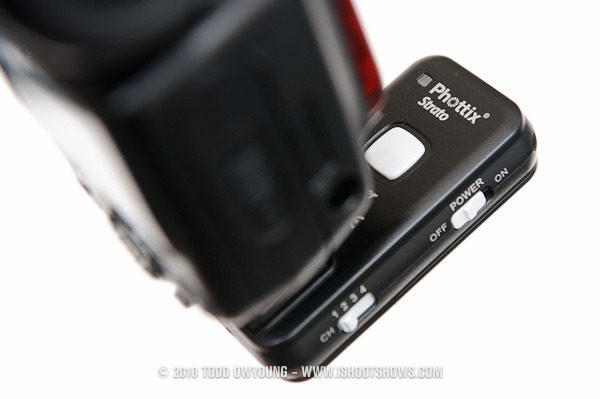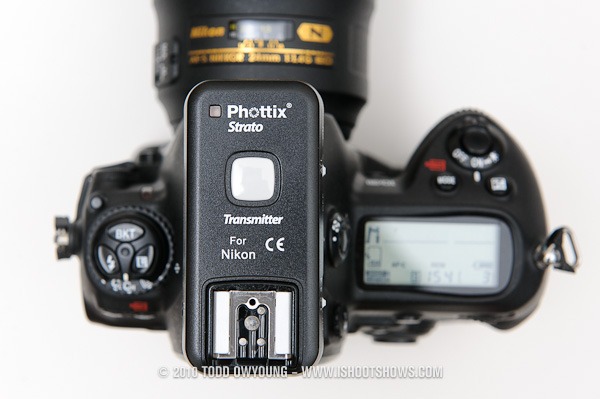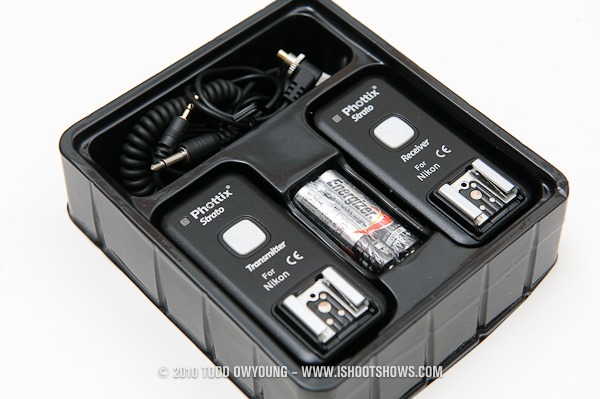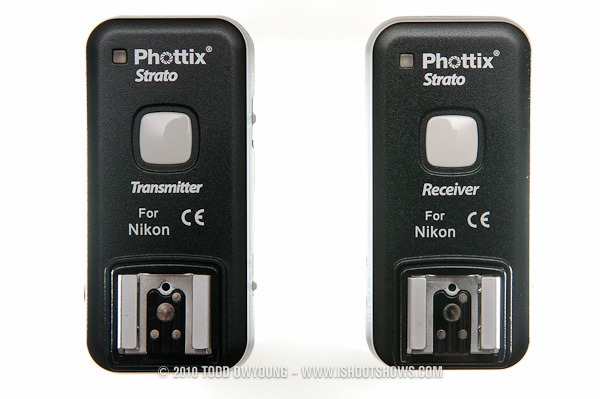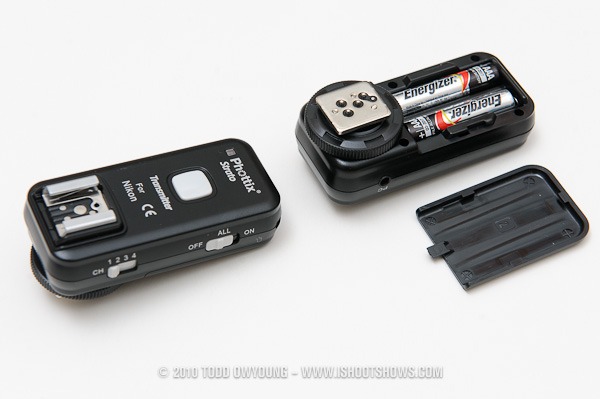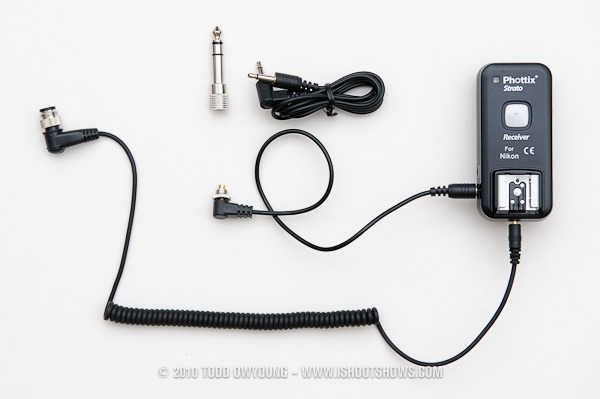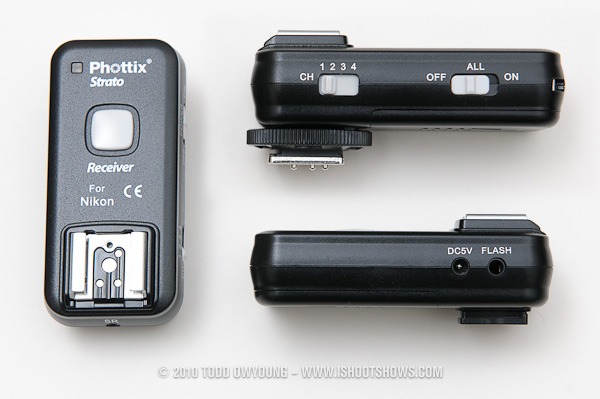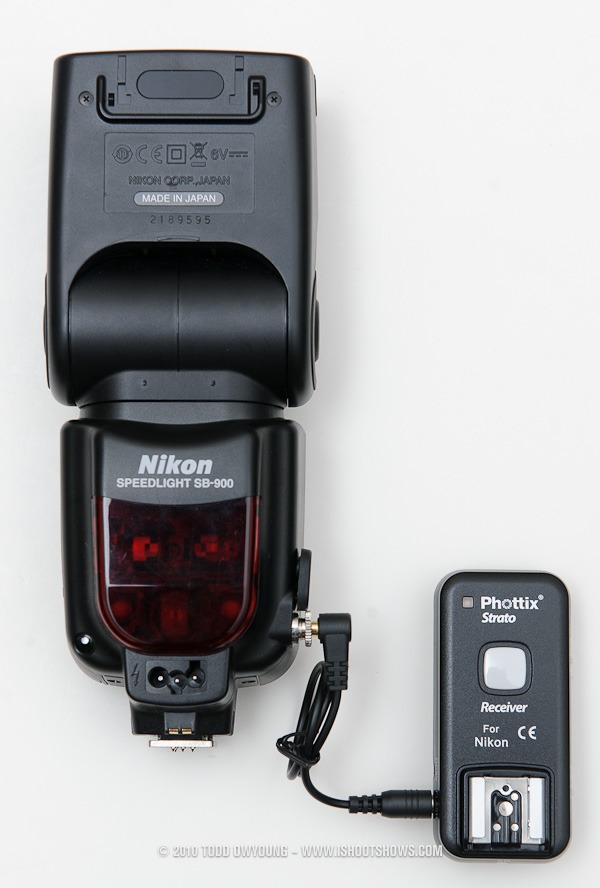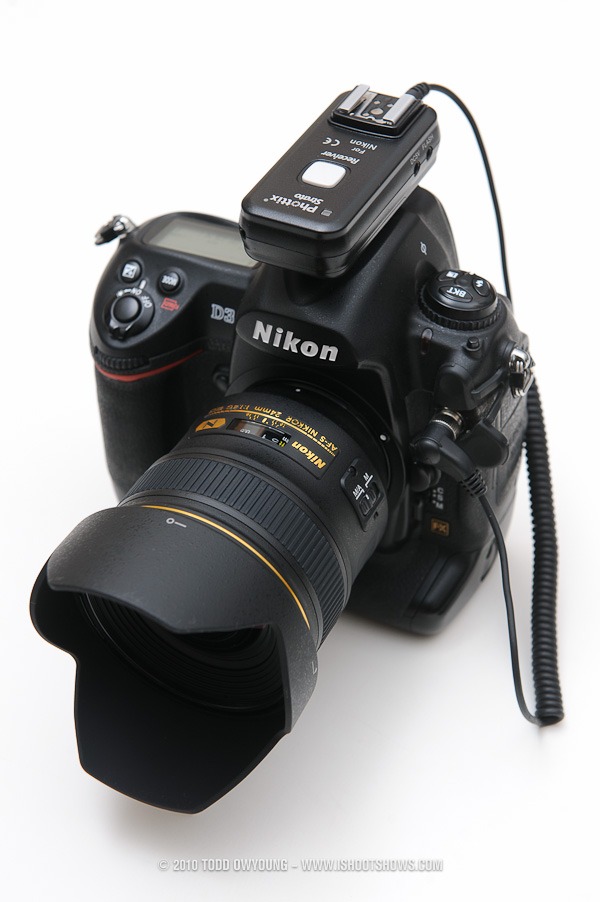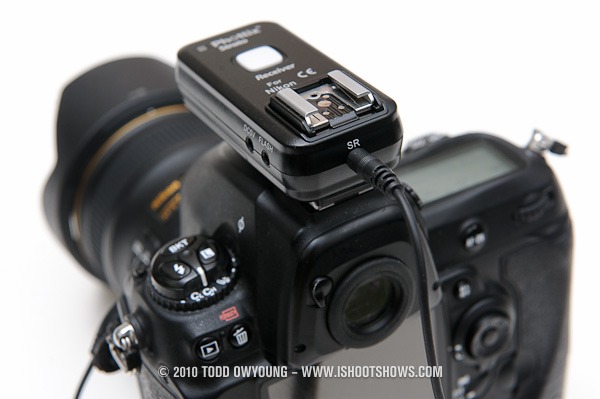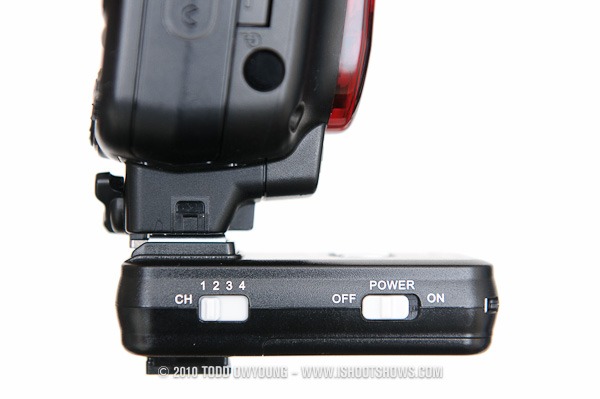After a few months of mystery, Phottix recently announced the second generation of their Strato wireless flash triggers. While at first glance the Strato looks like your standard 2.4GHz wireless flash trigger, Phottix has included so many smart details that the system warrants serious consideration for any speedlight shooter looking to step up to the reliability of radio triggers.
This review covers the details of the Phottix Strato and also offers a few points of comparison against the ever-popular Yongnuo RF-602 wireless flash triggers, which I recently reviewed.
Phottix:
For anyone unfamiliar with them, Phottix is a Hong Kong-based company that makes a wide range of camera accessories, from wireless flash triggers like Phottix Strato to GPS modules and wireless live-view remotes to lightstands.
The company's recent Phottix Atlas series of wireless flash triggers recently garnered a lot of attention due to their compatibility with the industry-standard Pocketwizards – featuring nearly identical features and full compatibility, all at a fraction of the price.
In short, Phottix is a camera company that any Strobist could love.
When I first heard about the Phottix Atlas, I was so intrigued that I inquired about review samples. And while the FCC-approved version of the Atlas was being fine-tuned for North American, Phottix offered to send me samples of their new Strato model for review.
Even though I'd just recently bought the Yongnuo RF-602, I was curious to see how the Stratos stacked up.
Phottix Strato – Wireless Flash Trigger:
The Phottix Strato is positioned neither as a premium wireless flash trigger like the Pocketwizard FlexTT5, with all the latest bells and whistles (and a price to match), nor a purely budget model like the Yongnuo RF-602. Rather, the Strato sits somewhere in the middle, offering solid performance, great build quality, and a few new features to make it stand out from the competition.
And at less than $75 for a set, the Strato is positioned at about half the price of offerings like the Elinchrom Skyports or Paul C. Buff's Cybersync series.
TTL Pass Through:
With the Strato, Phottix introduces “TTL pass through” capabilities to this middle market segment, which basically allows you to use a hotshoe flash on top of the Strato's transmitter with full TTL capabilities. What does this feature mean for photographers? Flexibility and freedom.
Taking advantage of the TTL pass through of the Strato, you can use a hotshoe flash on-camera to provide fill, bounce, or use the flash's AF-assist light. You can even put another brand of wireless flash trigger on the Strato transmitter's hotshoe and trigger another set of remote flashes along with the Strato's remotes.
In essence, what the Strato offers is all the features that you could use with your camera's normal hotshoe – think of it as the world's shortest TTL-sync cord.
For shooters using Nikon's CLS (or Canon eTTL), you can use the TTL pass-through function as a way of combining CLS triggering with the 2.5GHz Strato triggering.
In this setup, you could use non-TTL flashes or strobes with the Stato receivers, while using a Nikon SB-900 or Nikon SU-800 as the commander on top of the Strato transmitter to control a second set of CLS-capable speedlights, all with the benefits of TTL and groups.
One has to keep in mind that in this setup, no CLS/eTTL data is being sent by the Strato transmitter – triggering with CLS/eTTL is still done via IR sent from the commander flash, so you're not getting the same kind of TTL Frankenstein mix like you would with Pocketwizard FlexTT5 units.
Phottix Strato Specifications:
The Phottix Strato's specs look pretty standard for this class of wireless flash trigger. On their own, the specs of the Strato offer a lot to like, including AAA batteries for both the transmitters and receivers, and universal 3.5mm jacks for outputs.
It's these little details that the specs hint at that really make the Strato really stand out, as we'll see later on in this review.
| Model | Strato |
|---|---|
| Frequency | 2.4GHz worldwide |
| Channels | 4 + All-channels mode |
| Inter-compatibility | None |
| Design | Separate transmitter/receiver |
| Range | 100m+ |
| Flash Wake-up | Yes |
| Max Sync (s) | 1/250 |
| Wired Shutter Release | Yes |
| Batteries | AAA |
| Transmitter Hotshoe | Yes, TTL pass-through |
| Receiver DC port | Yes |
| Transmitter input | 3.5mm |
| Receiver output | 3.5mm, 2.5mm |
| Price (transmitter + receiver) | €68.20 $73.94 |
Inside The Boxes:

Inside the boxes for the Phottix Strato, you have just about every conceivable think you'll need to get started with these triggers, including Energizer-brand AAA batteries. One of the most beautiful things about the unboxing of the Strato transmitter-receiver kit was seeing that Phottix includes just about every imaginable cord and cable you'll need, from a PC-sync cord to connect to your speedlight flash to 3.5mm and 1/4″ mini plug connectors for your studio equipment.

The Strato system can be bought as one pair of transmitter and receiver, or as individual receivers, and both come with the full compliment of accessories. The one thing lacking from the individual receiver package is an miniplug to make PC jack, which is included in the kit.
Phottix Strato Receiver & Trigger:
On first look, the Strato receiver and transmitter appear almost identical – this design is in contrast to the Yongnuo RF-602 style, where the transmitter is about half the size of the receiver.
Aside from the functional differences, the transmitters feature a metal shoe and screw-down lock for securing to the hotshoes. Beyond that, the differences come down to different ports on the receiver and a heftier weight to the transmitter.
Phottix Strato Transmitter:
Phottix Strato Receiver:
One great thing about the Strato system is that both the transmitter and receiver take standard AAA batteries. The units ship with Energizer-brand batteries, but it's nice to know that you can use rechargeable batteries like the Sanyo Eneloop AAA NiMH with the system instead of more exotic and harder to find sizes.
Hats off to Phottix for understanding that usability doesn't always mean having the smallest gadgets (which smaller batteries would allow), but rather readily available and interchangeable batteries.
Connectivity – Outputs, Inputs, and Interconnects:
The Phottix Strato get a A+ for connectivity. Both the transmitters and receivers feature beautiful 3.5mm miniplugs and all the necessary cables, as well as a 3.5mm to 1/4″ miniplug adapter. Thankfully, there are no weird proprietary 3-in connections like the Yongnuo RF-602.
Also included with the transmitter kit are miniplug to PC-sync cords, so you're good to go if you want to connect the Strato receivers to your speedlight flashes that way instead of using the hotshoe connections.
The Strato receivers feature DC-inputs, so you can power them without batteries in the studio, along with a 2.5mm microplug connection that's used with the include shutter-release connector. The standard 10-pin shutter-release cable and the PC-sync cables feature threaded locking cuffs, which is a nice touch.
Controls:
The controls on the Strato unitst are pretty straight forward. Each receiver and transmitter has a big test button, which you can use to fire and/or wake the flashes. Pressing the test button on the receivers will fire that individual flash, while pressing the test button on the transmitter will fire all appropriately selected channels.
The Strato system allows for four channels, much like most comparable triggers. However, instead of dip switches or menu interfaces, the Strato features a simple four-channel slider selector on the receivers and transmitters. On the transmitter, there's also a master switch that determines whether the transmitter fires receivers on all channels or just the individual one to which it's set..
What this means for the photographer in multiple-light setups is essentially the ability to set different groups of flashes via channels, and then test these groups individually. When designing a lighting setup, this very quick ability to trigger specific lights and groups of lights makes short work of dialing in the right exposure.
With the cheaper system of dip switches – or more expensive models that bury these functions in menus on an LCD – this sort of fast, on-the-fly testing is no where as easy.
Build Quality:
The build quality of the Phottix Strato system is great – some might say impressive, even. Both the transmitters and the receivers – which are very similar in design – feature a robust build quality and heavy-duty plastic. No creaking joints, not even on the battery doors, which lock securely and have no give. Big upgrade from the Yongnuo RF-602s, but also expected given the Strato cost almost twice the price.
All the switches on the transmitters feature positive detents at each position and seem solid. The only gripe I can find with the Stratos is the test/shutter release buttons – since there's no off-switch on the transceiver, a protected or lower-profile button would have been appreciated to prevent accidental use.
That, and I'd love to see metal feet on the receivers. Then again, not even Pocketwizards offers metal feet on their transceivers, so maybe we should be thankful we get metal feet on the Strato transmitters.
Operation – Use As A Wireless Flash Trigger:
Unlike older flash triggers like Pocketwizard Plus II or other systems like Elinchrom Skyports or Paul C. Buff Cybersyncs, the Phottix Strato system is designed for small hotshoe flashes in mind, and connecting them to your flashes is as easy as sliding the units onto the receivers' hotshoe. No messy PC-sync cords required.
Phottix accommodates studio strobes using the larger 1/4″ sockets with the included 1/8″-to-1/4″ adapter. Since Phottix includes just about every connector you could desire in the kit, you're set to trigger anything from a humble Nikon SB-400 to Alien Bees to Profoto.
To use the Strato system, simply attach the transmitter to your camera's hotshoe and then attach the receiver to your flash or strobe of choice. Thanks to the four-channel slider, setting the individual receivers is dead simple.
Since I'm using to using four groups with Nikon CLS, I will often still group my flashes in that same manner when using the Phottix Strato. Even though there's no manual control over the units' power with the Strato system, what this use of multiple receivers does allow for is quickly setting the exposure for different groups of flashes using the channels settings.
For example, I can set my backlight, fill, and keylight into three different channels, and test the exposure for each light individually using the separate channels. When it's time to put it all together, simply setting the transmitter to fire all channels (instead of individual channels) produces the complete exposure.
While the whole system of different channels with radio triggers is designed to give you flexibility when there may be competing wireless signals or other photographers using the same system, I love the ease of the Strato's channel system for tricks like the above for grouping flashes.
Operation – Using Strato As Remote Release:
While most users will be using the wireless flash triggering function, the Phottix Strato system doubles as a wireless shutter release. With the receiver plugged into the 10-pin shutter release socket of your camera, the transmitter's main button acts as the shutter release, complete with half-press capabilities. Simple.
Reliability & Range:
In my testing, the Phottix achieved a reliable range of approximately 70-meters. This is nearly identical to the reliable range to which I tested the Yongnuo RF-602 under the same conditions.
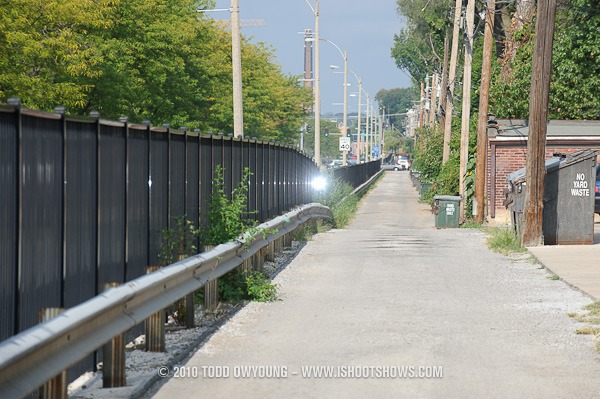
While the Phottix Strato specs a 100-meter range, I can only imagine that this is under ideal conditions. Under the more real-world conditions, I tested the Strato in an alley way that was situated between a four-lane street and row of apartment buildings, with power and phone lines running parallel to the alley. Considering the general interference of the powerlines and the dozen-plus wireless networks in the area of testing, I think the 70-meters of the Strato are quite good.
I have no reservations recommending the Strato for reliability. For my own work, where I'm generally shooting at distances of 10-meters from the remote lights, the Phottix Strato offer rock-solid reliability. In recent shoots using the Strato in the studio, I had zero misfires and 100% accuracy with the Stratos.
Flash Sync Speeds:
I am happy to say that the Phottix Strato features 100% completely clean triggering at 1/250. Here's a completely boring shot of a wall shot at 1/250 – boring, but you're testing sync speeds, this is a beautiful sight.

Perfect, clean triggering at the max sync speeds of my D3 and D700. Just as you'd expect from your flash trigger that promises 1/250 sync speeds.
Flash Wake-Up:
One feature the Stratos boasts is the ability to “wake up” flashes that have gone into standby mode aafter inactivity. Most speedlights have a standby mode, which helps conserve power when the flashes are not in use, since active flashes are continually topping off the capacitor to be ready to deliver consistent output.
I use two Nikon Speedlights in my portable lighting kit – results with these flashes is below.
As advertised, the Phottix Stratos do wake up the Nikon SB-900 speedlight when they've fallen into standby mode. This can be accomplished by a either the test button on the transmitter or by activating the camera's shutter release while the transmitter is enabled on the hotshoe.
Nikon SB-600 Speedlight
Just like most other wireless triggers on the market, the Nikon SB-600's weird communication protocols seem to have proved a challenge, and these flashes do not wake from sleep. As a best practice, turn off the standby function of the SB-600 for best results if you use it.
End Notes & Conclusion:
When bought my set of Yongnuo RF-602, the Phottix Strato weren't readily available. However, if they were, and knowing what I know now, the Strato system would have been a very strong contender for my money, even at nearly twice the asking price.
Pro:
- Reliable & 100% clean triggering at 1/250
- Great build quality
- Locking hotshoe for Nikon speedlights
- Receivers & transmitters use common AAA batteries
- Metal foot on transmitter
- Screw-down lock on transmitter
- Metal threaded socket on receivers
- Easy four-position slider for channels
- Standard mini-jack connections
- PC, mini-jack, and 3.5mm connectors included!
- No proprietary connectors
- Cheaper than Pocketwizards, Elinchrom Skyports, Paul C. Buff Cybersyncs, etc.
Cons:
- Plastic foot on receiver
- No off-switch on transmitter
Compared to other flash triggers like the Elinchrom Skyports or Paul C. Buff Cybersyncs – both popular alternatives to the more expensive Pocketwizards – the Strato stack up very well despite costing about half the price. For the “strobist shooters” using small flashes like David Hobby or Joe McNally, the hotshoe connectivity of the Phottix Strato makes it a natural choice.
To me, what the Strato embody is a new generation of budget-friendly flash triggers that offer rock solid performance without compromise. Unlike budget-kings like the Yongnuo RF-602, there aren't really any caveats for the Phottix Strato.
Instead of simply meeting expectations, the Strato actually inspire confidence with great build quality and reliable triggering. On top of that, the Stato system even offers up convenient features like TTL pass-through, expanding the triggers' utility and flexibility even further.
So, anyone want to buy my Yongnuo RF-602?
Where To Buy The Phottix Strato:
No need to look on eBay for the Strato – it's best to go straight to the source. You can order the Phottix Strato directly from their online store. If this review has been helpful to you, ordering through any of the affiliate links to Phottix keeps me pleasantly caffeinated on green tea.
End Notes:
Big thanks to Phottix for sending the Strato units for review. As a follow up to this review, I'm going to go into a little more detail comparing the Strato against the Yongnuo RF-602, as I know many people are looking at both systems. In the meantime, let me know if there's anything you want to know about the two systems that I haven't already covered.

